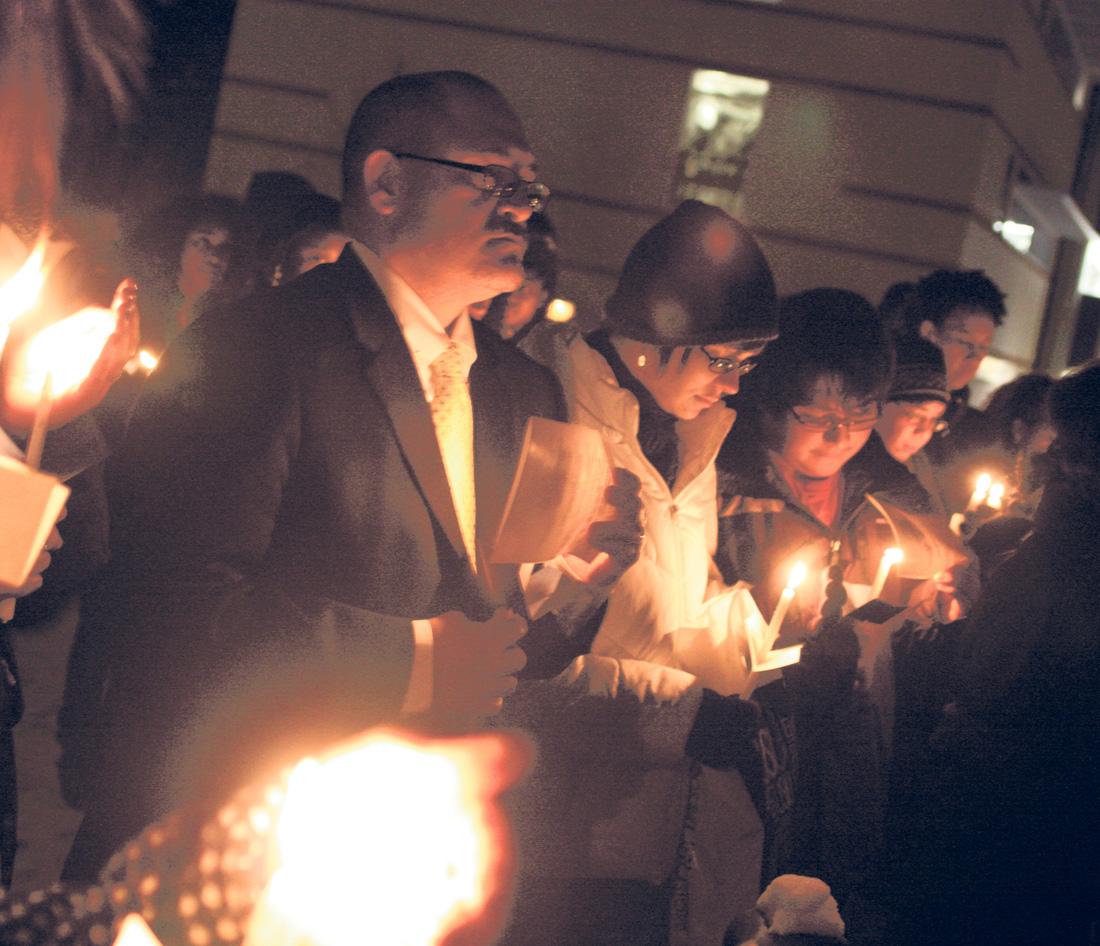History of USU civil rights remembered
In 1968, the Rev. Martin Luther King was assassinated, ending the life but not the legacy of one of the nation’s most distinguished champions of human rights. Utah State University students honored King Wednesday with a candlelight vigil and on Monday will join the nation in celebrating the holiday in his name.
King organized a campaign of non-violent protests against the civil injustices of his time and in 1964 was awarded with the Nobel Peace Prize. At the time, he was the youngest recipient of the award. That same year, the Civil Rights Act of 1964 was passed, bringing a legislative end to discrimination on the basis of sex and race.
The state of Utah is unique in many ways on the subject of civil rights. Until 1978, The Church of Jesus Christ of Latter-Day Saints, the predominant religious body in the state, denied its priesthood to black members, adding tensions to the issue long after the civil rights acts of the 1960s. More recently, in 2000 Utah became the last state to recognize Marin Luther King Jr. Day. Until then the holiday had been known as Human Rights Day.
Civil Rights at USU
Ross Peterson, vice president for advancement, came to USU in 1971 and taught African-American history and a course on the Civil Rights movement. Around that time, there were only a handful of black students, mostly athletes. While tensions existed within members of the community, Peterson said attitudes among the student body were respectful, for the most part.
“There were little things, like you couldn’t get your hair cut in Logan,” Peterson said. “For the most part, it (was) a low-key, safe environment and you’re here for a few years.”
According to documents in the USU archives, in 1961, just three years before the Civil Rights Act, there were a dozen black students, one of whom, Charles Belcher, was elected second Vice President of the Associated Students of Utah State University. In addition to that office, Belcher was chairman of the committee for union building activities and a member of the varsity track team. Peterson said Belcher went on to be a minister. Since then, there have been few black students in the elected positions of ASUSU, but among that group is Dan Gowan, who was elected student body president in 1993.
After the civil rights acts were passed, Peterson said extra scrutiny was placed on the LDS church for its policy regarding the priesthood.
“When I came in ’71 that was a huge issue,” Peterson said. “It caused some confusion.”
When the church began offering the priesthood to black members, Peterson said that slowly, the existing tensions began to ease.
“It wasn’t easy for adults who had their ideas of why this was so. Those types of attitudes don’t die easily,” Peterson said. “As far as the students, it certainly relaxed tension if their had been any. By ’78, it was a different world.”
USU Today
Rica Molet, a junior from Colorado studying graphic design, is the president of the Black Student Union at USU. She said around 40 students participate in the organization, which hosts cultural events like the Soul Food Dinner and Candlelight Vigil and helps with other events like World Aids Day.
The vigils have seen successful turnouts, Molet said, and a major part of the event is trying to raise awareness on the campus for the Civil Rights movement and King’s work.
“Martin Luther King changed it, not only for the black people but for the whole community,” Molet said.
Molet came to USU in part due to receiving a scholarship and also because it was just the right distance away from her home in Colorado.
“It was far enough away that I didn’t have to visit very often,” Molet said.
After visiting the campus, her decision was made.
“Right as I got on campus I knew this was the place for me,” she said. “I love it here.”
ASUSU Diversity Vice President Kaho Fiefia said the university made a big step with the creation of the Access and Diversity center.
“I feel like the university is moving toward being a more diverse university,” Fiefia said.
His position extends beyond the cultural clubs to include all campus organizations and he said his office has been working to integrate the student body. Many American students, he said, are not familiar with events like Diwali and Salsabration and as a result, attendance tends to be lower than traditional American activities, like the Howl. Over the years he has been at USU, he said he’s seen an improvement.
Fiefia has worked with housing during his time at USU and said when he began, there were no black or Dominican resident assistant (RA).
“Now with res(ident) life we have several gay RAs, two black RAs, one Dominican mentor and 3 Dominican RAs,” Fiefia said. “It’s happening. It’s slow, but it’s happening.”
A ways to go
Much has changed since Peterson first arrived at USU in 1971, both in Utah and in the nation. In his office, Peterson has a Norman Rockwell painting titled “The Problem We All Live With,” which depicts a young girl being escorted to class while onlookers throw tomatoes. The scene is a famous one, demonstrating the first days of integrated public schools.
“It haunts me,” Peterson said. “So much of the stuff about Obama is racially motivated.”
Peterson said it will still be some time before we, as a country, are completely past the days of prejudice toward those that are different from us.
“You just wonder when it will really take place, if it ever will,” Peterson said.
– b.c.wood@aggiemail.usu.edu
Black students elected to ASUSU (since 1960):
1961: Chuck Belcher, ASUSU Vice President
1970: George Tribble, Athletics VP
1974: Russel Walker Hawkins Jr., Academic VP
1992: Bre White, Athletics VP
1993: Bre White, Athletics VP
1993: Dan Gowan, Study Body President
2000: Trine Thomas, Arts and Lectures VP

